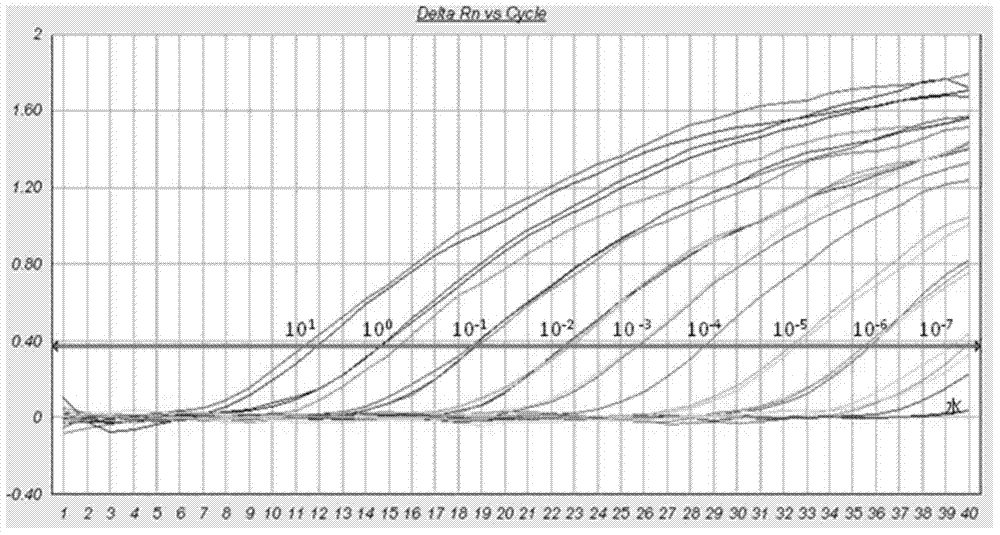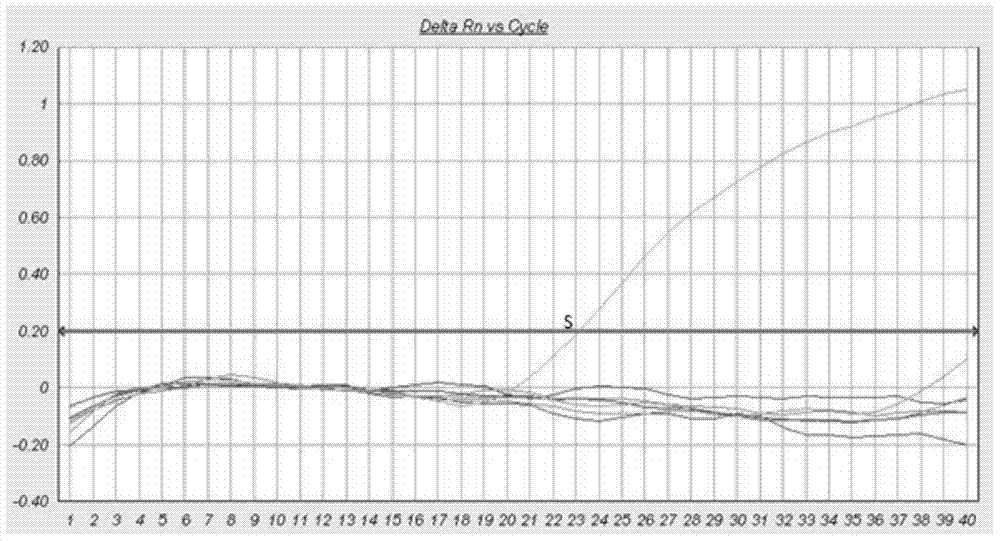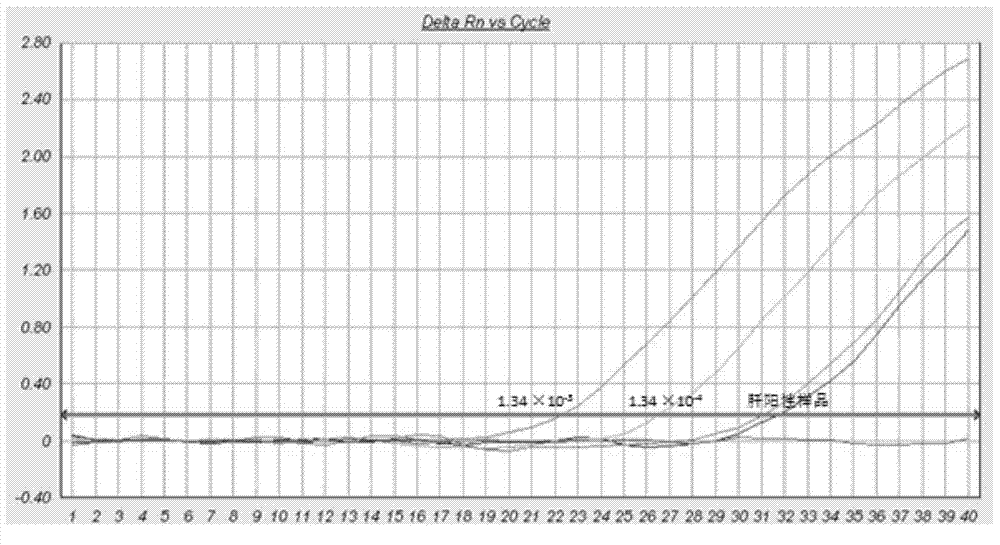Babesiidae protozoon detection primer and real-time fluorescent quantitative PCR (polymerase chain reaction) kit
A real-time fluorescence quantitative, Babesia technology, applied in the biological field, can solve the problems of unsatisfactory results of ordinary PCR, cumbersome Babesia detection, long detection cycle, etc., and achieves the effects of good detection effect, high degree of automation, and simple operation.
- Summary
- Abstract
- Description
- Claims
- Application Information
AI Technical Summary
Problems solved by technology
Method used
Image
Examples
Embodiment 1
[0026] The design of embodiment 1 primer and probe
[0027] In the present invention, a pair of oligonucleotide sequences (primers) and an oligonucleotide sequence (probe) are designed by searching and comparing the 18S rRNA gene sequences in members of Babesia murine origin, and the designed primers can specifically The gene fragment of Babesia 18SrRNA was amplified, and the amplified product was 170bp.
[0028] The designed primer sequences are shown in SEQ ID No.1 and SEQ ID No.2:
[0029] Primer 1 (bc246f) SEQ ID No. 1: 5′-GGCGATGTATCATTCAAG-3′;
[0030] Primer 2 (bc415r) SEQ ID No. 2: 5′-GTCAGGATTGGGTAATTTG-3′;
[0031] The designed probe sequence is shown in SEQ ID No.3. When synthesizing the sequence, its 5' is modified with FAM and NONE groups, that is, bc394probe: 5'-FAM-CGCCTGCTGCCTTCCTTAGA-NONE-3', as a probe;
[0032] Primers and probes are entrusted to Synthetic Synthesis.
[0033] The nucleotide sequence of the amplified product is shown in SEQ ID No.4, and S...
Embodiment 2
[0034] Embodiment 2 Babesia real-time fluorescent quantitative PCR detection kit
[0035] The detection kit includes the following components:
[0036] Taq DNA Polymerase Mixture (2×);
[0037] ROX dye;
[0038] Primer 1: its nucleotide sequence is shown in SEQ ID No.1;
[0039] Primer 2: its nucleotide sequence is shown in SEQ ID No.2;
[0040] TaqMan probe: the nucleotide sequence is shown in SEQ ID No.3, and its 5' end is marked with a FAM group, and its 3' end is marked with a NONE non-fluorescent group;
[0041] Negative control: sterilized ultrapure water;
[0042] Positive control: plasmid DNA carrying an amplified product, the nucleotide sequence of which is shown in SEQ ID No.4.
[0043] Wherein, the Taq DNA polymerase mixture (2×) is a mixture of 2 times the concentration of Taq DNA polymerase, Buffer, and dNTP mixture used in the PCR reaction; the ROX dye is ROX Reference Dye II (50×); The above Taq DNA polymerase mixture (2×) can also be Premix Ex Taq (2×). ...
Embodiment 3
[0045] The detection sensitivity of embodiment 3 Babesia real-time fluorescent quantitative PCR kit
[0046] (1) Acquisition of Babesia positive plasmid DNA: Synthetic by Shanghai Sangon.
[0047] (2) Gradient dilution of positive plasmid: carry out 10-fold ratio dilution, that is, 10 1 ~10 -7 , of which 10 -7 The concentration of plasmid was 1.34 x 10 -7 ng / μL.
[0048] (3) Preparation of real-time fluorescent quantitative RT-PCR reaction system:
[0049]
[0050] (4) Real-time fluorescent quantitative PCR reaction program:
[0051]
[0052] (5) Collect fluorescence signal and detect Ct value.
[0053] Test results such as figure 1 (the abscissa represents the cycle number Cycle Number, and the ordinate represents the fluorescence intensity Fluorescence), the results show that the positive plasmid was diluted to 1.34 × 10 -7 The signal can still be detected after the concentration of ng / μL, indicating that the sensitivity of the real-time fluorescent quantitativ...
PUM
| Property | Measurement | Unit |
|---|---|---|
| Sensitivity | aaaaa | aaaaa |
Abstract
Description
Claims
Application Information
 Login to View More
Login to View More - R&D
- Intellectual Property
- Life Sciences
- Materials
- Tech Scout
- Unparalleled Data Quality
- Higher Quality Content
- 60% Fewer Hallucinations
Browse by: Latest US Patents, China's latest patents, Technical Efficacy Thesaurus, Application Domain, Technology Topic, Popular Technical Reports.
© 2025 PatSnap. All rights reserved.Legal|Privacy policy|Modern Slavery Act Transparency Statement|Sitemap|About US| Contact US: help@patsnap.com



